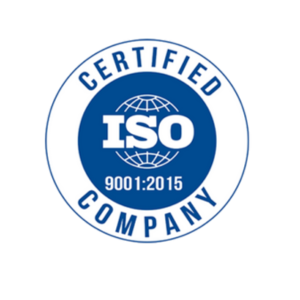
4 Key Process Improvement Techniques for Service Industry Growth Now
In today’s hyper-competitive market, businesses rely heavily on efficient service delivery to retain customers and enhance satisfaction. But before diving into process improvement techniques, it’s crucial to understand the meaning of the service, meaning what makes services distinct and why improving them requires specialized approaches like Six Sigma Certification.
This blog explores what is the meaning of service, the challenges unique to service operations, and the four most effective ways to enhance process efficiency. Finally, we’ll explain how Lean Six Sigma courses from ClassifyIQ can help transform service quality.
Understanding the Meaning of Service in Today’s Economy
Service Meaning and Its Unique Characteristics
To understand service meaning, it’s important to note that services differ fundamentally from physical goods. So, what is the meaning of service? A service is an activity or benefit offered to customers that is intangible, inseparable, perishable, and variable.
Unlike tangible products, services cannot be touched or stored. They are intangible, meaning their value lies in the experience rather than physical possession. They are inseparable, as they are produced and consumed simultaneously. Services are perishable, meaning they cannot be inventoried for future use, and variable, as quality often depends on the provider and circumstances.
Industries such as healthcare, IT, finance, and consulting operate on these principles, making it essential for organizations to maintain consistency, reliability, and personalization in every interaction.
Why Service Industries Face Process Challenges?
Service businesses often face unique difficulties in managing quality and operational efficiency. Unlike manufacturing, where processes can be standardized easily, service operations depend heavily on human interaction, creating room for variability. Maintaining a uniform customer experience while managing process efficiency is one of the biggest challenges. Differences in employee performance, customer expectations, and demand fluctuations lead to inconsistent outcomes. That’s why adopting structured process improvement techniques becomes vital for sustainable success.
What Are the Actions Needed to Improve a Process in the Service Sector?
Organizations often wonder, what are the actions needed to improve a process in their service systems? The key lies in identifying bottlenecks and optimizing workflows to eliminate inefficiencies. Service industries must address issues like demand planning, handling quality variation, and implementing standardization. The absence of standardized methods often leads to inconsistent service outcomes and reduced customer satisfaction. LSS Certification plays a major role here. It provides structured problem-solving frameworks that identify root causes, measure performance, and drive continuous improvement. From reducing delays in banking transactions to minimizing patient waiting times in hospitals, Six Sigma ensures processes are data driven and customer centric.
4 Key Process Improvement Techniques for Service Industries
Now that we understand the service meaning and challenges, let’s explore the top four process improvement techniques every service organization should adopt.
1. Develop a Process Manual for Standardization
Standardization is one of the most effective process improvement steps in service management. Creating a detailed process documentation manual helps ensure consistency in service operations. This manual acts as a reference guide for employees, outlining procedures, response times, and escalation protocols. It simplifies onboarding and ensures that service delivery remains consistent even when staff members change.
By documenting workflows, organizations can reduce human error, improve communication, and maintain quality standards across all departments. Ultimately, standardization leads to better efficiency, transparency, and customer satisfaction.
2. Automate Repetitive Service Processes
Modern service companies are increasingly embracing automation to streamline operations and boost productivity. Automation drives efficiency improvement by minimizing manual tasks and enabling faster turnaround times. For instance, ATMs and self service kiosks in banking, chatbots, and online systems in customer service are great examples of how automation enhances responsiveness and customer experience. When used effectively, automation allows employees to focus on high-value tasks such as problem-solving, customer relationship management, and innovation leading to sustainable growth.
3. Reduce Failure Demand with Lean Six Sigma Techniques
A major focus of LSS Certification is minimizing failure demand tasks caused by not getting things right the first time. For example, customer complaints, rework, or repeated service calls arise when the process fails to meet expectations. Through Lean Six Sigma methodologies, companies learn to distinguish between value and failure demand. By identifying waste and defects, they can eliminate redundant activities and improve reliability. The advantages of LSS include better process control, reduced variation, and improved performance. Moreover, the benefits of Lean Six Sigma Green Belt Certification empower professionals with tools to measure, analyze, and enhance processes effectively. Service businesses that adopt Lean Six Sigma techniques witness measurable gains in cost reduction, quality enhancement, and customer loyalty.
4. Conduct a Service Blueprinting Exercise for Quality Control
One of the most underutilized process improvement techniques is service blueprinting, a structured approach to visualizing the entire customer journey. By conducting process mapping, service organizations can identify the touchpoints where customers interact with employees or systems. This helps them analyze the backstage operations supporting each interaction and pinpoint inefficiencies. Blueprinting directly supports customer experience improvement by providing insights into service flow and pain points. It also aligns with quality metrics, allowing businesses to establish measurable performance standards. When service teams understand the full blueprint of their process, they can anticipate problems, streamline communication, and deliver superior quality consistently.
How Lean Six Sigma can Helps in Process Improvement?
The importance of Six Sigma Certification in the service industry cannot be overstated. Whether pursued through classroom programs or Lean Six Sigma Certification Online, it equips professionals and organizations with structured tools for quality and efficiency.
Advantages of Lean Six Sigma in Service Process Improvement
The advantages of Six Sigma go far beyond manufacturing, they are critical for service excellence too. Techniques like DMAIC (Define, Measure, Analyze, Improve, Control) help identify and eliminate inefficiencies in workflows, reduce waste, and enhance customer satisfaction.
When applied to service operations, ensures that each process step adds value and reduces unnecessary delays. The methodology also improves employee accountability and operational consistency.
Professionals holding a Lean Six Sigma Yellow Belt Certification gain foundational knowledge to contribute to these continuous improvement efforts within their teams.
Benefits of Lean Six Sigma Green Belt Certification for Professionals
The benefits of Six Sigma Green Belt Certification Cost extend to professionals across industries. Individuals trained at this level develop analytical and leadership skills, enabling them to manage projects focused on service optimization and quality improvement.
They gain hands-on expertise in statistical analysis, problem-solving, and team coordination, all of which contribute to measurable business improvements. These skills are especially valuable in high-contact service industries where small process changes can have significant customer impact.
Learn Lean Six Sigma Online with Classify IQ
Looking to take your career to the next level? ClassifyIQ offers comprehensive Lean Six Sigma Certification Online and Lean Six Sigma Online Course India programs designed for working professionals and corporate teams. From Lean Six Sigma Green Belt Certification to advanced Lean Six Sigma Black Belt Certification Training Programme, ClassifyIQ ensures a globally recognized, practical learning experience. The courses are structured to balance theory with real world applications, making them ideal for individuals aiming to lead process improvement initiatives. With flexible modules, mentorship support, and transparent pricing, learners can also explore the LSS Green Belt Certification Cost and begin their Lean Six Sigma Online Learning India journey at their own pace.
Final Thoughts: Boost Service Efficiency with LSS
Understanding the service meaning and mastering process improvement techniques are vital for any organization striving for operational excellence. By integrating structured frameworks like six sigma certification in delhi, service industries can achieve higher consistency, lower costs, and improved customer satisfaction. Whether it’s standardizing procedures, embracing automation, or optimizing through Six Sigma Green Belt Certification, the path to continuous improvement starts with knowledge. Partner with ClassifyIQ to enhance your skills, empower your team, and redefine service excellence in your organization.
















